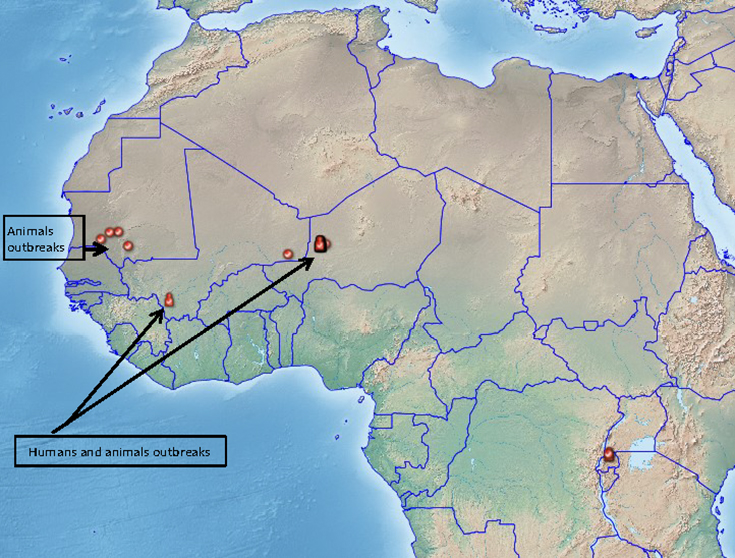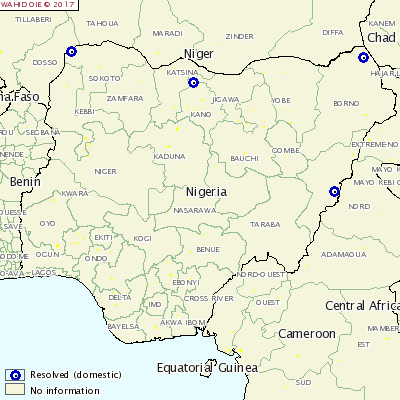First outbreaks of Rift Valley Fever in Nigeria
On July 24, 2017, the Nigerian authorities notified for the first time the OIE (World Organization for Animal Health) of four outbreaks of Rift Valley Fever (RVF). The cases were detected by serological tests and confirmed on July 11 2017. The first outbreak was detected in an animal market on the border with Niger, in the Sokoto Region, Illela province and 63 animals of various species (cattle, sheep, goats and dromedaries) were serologically positive.
The second outbreak was confirmed in a village on the border with Cameroon, in Adamawa Region in the province of Mubi and affected 11 bovine.The third outbreak occurred in a village bordering Chad, in the Borno Region in the province of Gomboron Ngala and affected 64 bovine.The fourth outbreak happened in a village in the Kano Region, in the province of Minjibir and 305 cattle were involved. The presence of the infection was detected by the serological surveillance carried out in the border areas of Nigeria on bovine, ovine, caprine and dromedary. The National Institute of Veterinary Research of Nigeria analyzed all samples using the ELISA serological test.
No clinical signs have been observed in animals and humans and, at the time, no special control measures have been taken.
The Rift Valley Fever RVF is a zoonoses that affects ruminants; it is transmitted by vectors and via the direct contact with diseased animals. Man gets infected predominantly through contact with infected animals and therefore staff of laboratories, slaughterhouses, breeders and butchers are the main categories at risk of infection.
Recently, some RVF clinical outbreaks in animals and human cases have been reported in neighboring country like Niger (September 2016 to March 2017) and Mali (October 2016 to July 2017). In Niger, the dead animals officially declared were 39 cattle and 117 sheep/goats out of a total of 1076 animals present.
In Mali, however, there have been abortions in flocks of sheep/goats and, as a result of further controls, 9/228 goats were serologically positive for IgM antibodies, witnessing a recent infection. Further investigations are ongoing in these countries to determine the extent of the infection.

Figure 2. Outbreaks of RVF (animals and humans) in Mali and in Niger, years 2016-2017 (ref: empres-i.fao.org)
© IZSAM August 2017
|
|
Istituto Zooprofilattico Sperimentale
dell'Abruzzo e del Molise "G. Caporale"
Campo Boario | 64100 TERAMO | ITALIA
Telefono 0039.0861.3321 | Fax 0039.0861.332251
e-mail: archivioeprotocollo@izs.it
Posta elettronica certificata: protocollo@pec.izs.it
Partita IVA: 00060330677
Codice Fiscale: 80006470670



